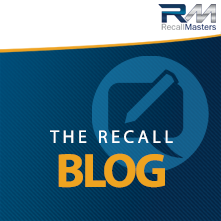When Digital Starts Winning, Fight Back
When Digital Starts Winning, Fight Back
In the last few years, a war between dealerships and independent service centers over consumers has fueled a competitive fire. At stake is millions spent by consumers on retail service and, perhaps, the survival of many dealerships. The marketing weapon of choice used to be retail signage or print advertising, but now it’s all about digital marketing. And, in the digital world, the independents are winning the war.
However, one segment of service business which is completely safeguarded for dealers is recall repairs. But hold that smile for a minute, as this recall opportunity doesn’t necessarily mean that consumers are thrilled to be visiting a dealership. Recent surveys suggest that consumers prefer independent service centers, citing quick service and ease of appointment scheduling. So, once the recall work is complete, that customer quite often defects to an independent for future service.
Today’s internet behemoths have essentially trained consumers to expect prompt service – an “I want it now” mentality. And, sometimes the speed at which recall repairs can be completed is out of the hands of dealerships. Parts availability, trained technicians and shop capacity, all play a part in fulfilling these customer’s needs.
Well, how did Amazon leapfrog and, at times, squash traditional “brick and mortar” industries in an era where people “want it now?” How did they find that balance between “now” and “fulfillment” that has escaped the grasp of many now defunct retailers?
They used technology.
There are a plethora of technologies in the automotive industry alone that, collectively, can transform a dealership’s scheduling, parts and service capacity into a well-synchronized machine that provides consumers with the “Amazon-like” experience they have come to expect.
With the huge volume of recalls dealerships and consumers currently face, it makes sense to investigate technologies that can help your dealership deliver a better customer experience. Look for solutions that help identify and improve shop loading and capacity. Technologies that help prevent service advisors from promising customers they can accommodate them when, in fact, they can’t due to lack of parts or shop capacity, leading to angry customers. Amazon isn’t perfect, but they have a pretty stellar track record of delivering on promises, which convinces consumers that the experience is desirable.
Use technology to build and strengthen relationships with recall customers and, perhaps, even convince many of them that they should continue to bring their vehicle in for regular maintenance…not just recalls.
In my last blog, I pointed out that “discounting” as a differentiator in the service industry does not serve dealerships well. I’m not reversing on this stance by using Amazon as a model. This isn’t to suggest that Amazon doesn’t lead with “price” as a key market differentiator – obviously, they do. What I’m saying is that Amazon implements technology to create efficiencies that make it difficult for other online retailers to keep pace.
Amazon has figured out how to keep prices low while being more profitable today than they did when they first launched. For dealerships to compete with independents in an environment where customers expect low prices, speed and efficiency, it only makes sense to search for innovative technology solutions.
It may take knocking down some old processes that serve as anchors to dealership service departments. But, if the focus is on the customer experience, then the effort will pay off with better profitability, improved CSI scores and customers who will happily pay more for quality technicians and parts.

